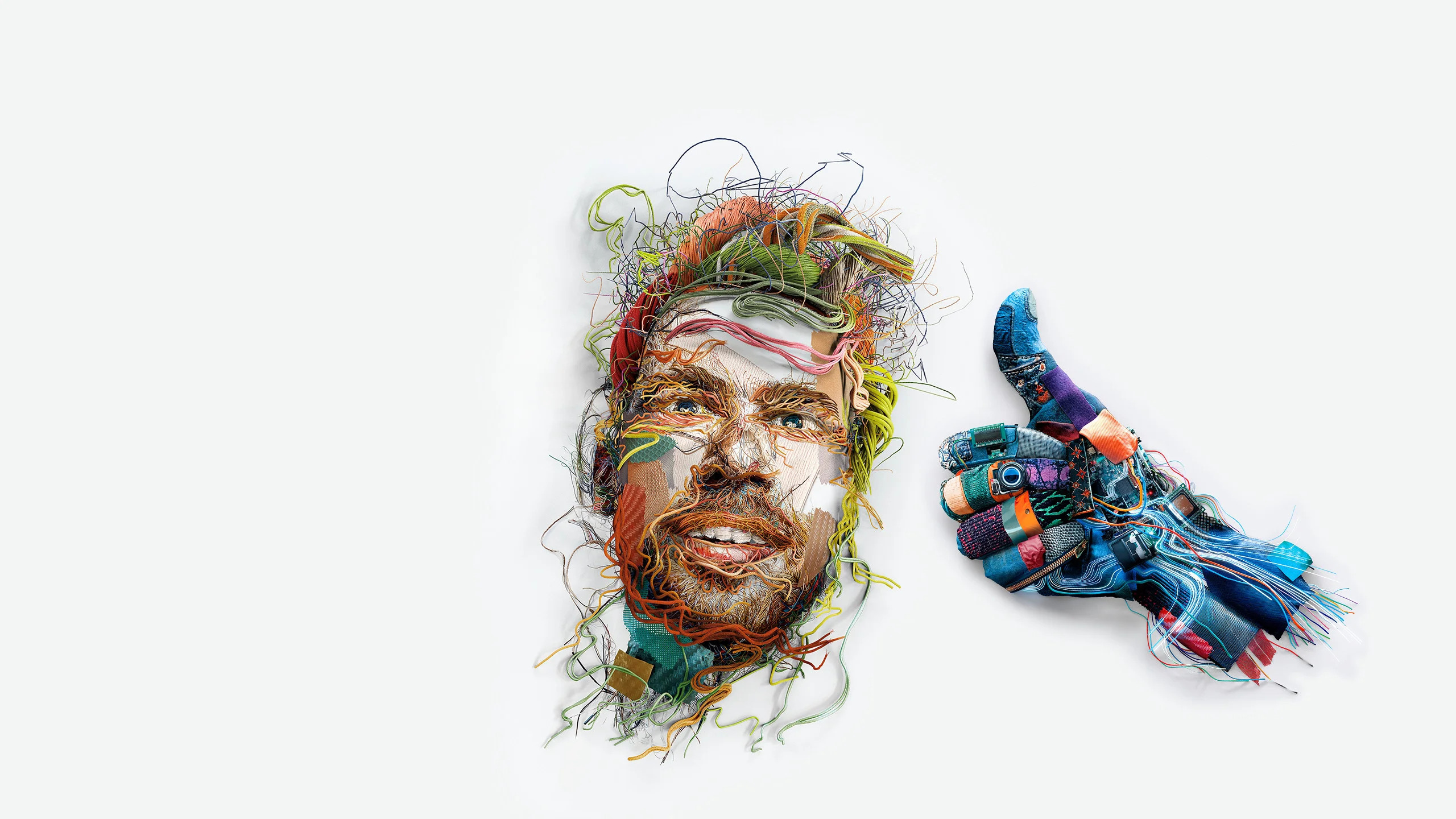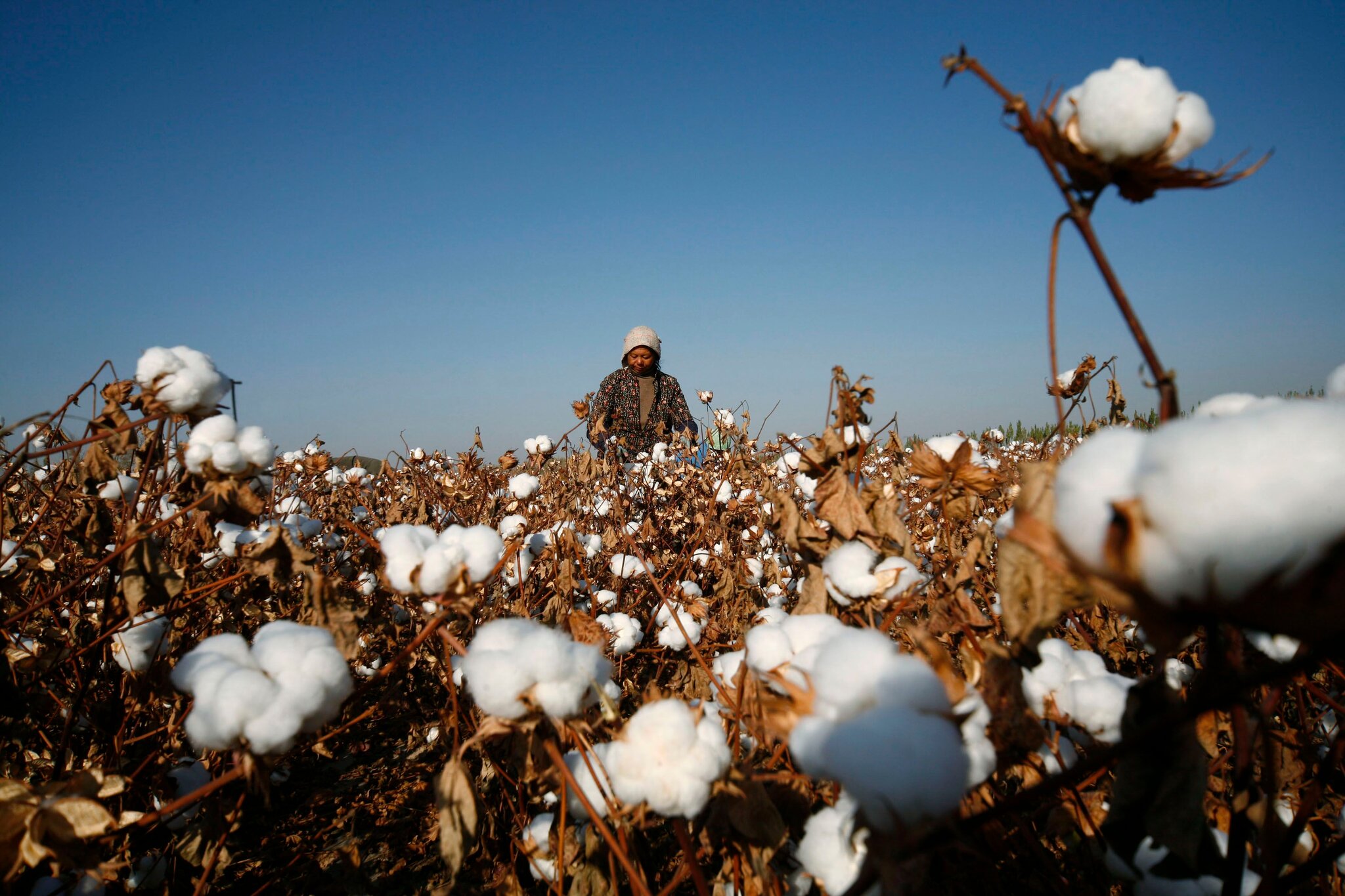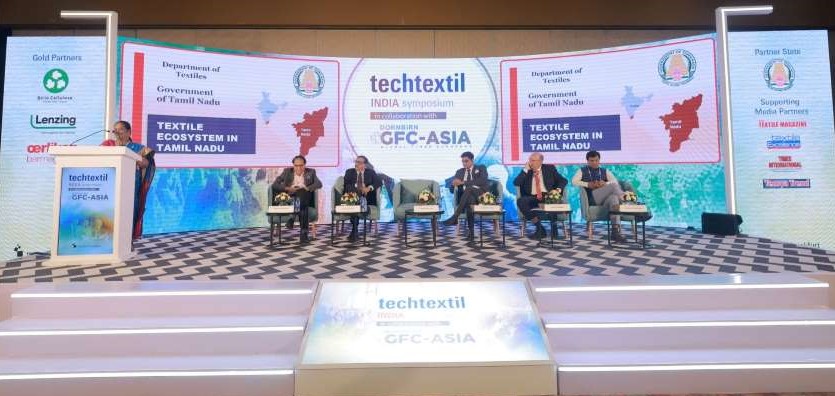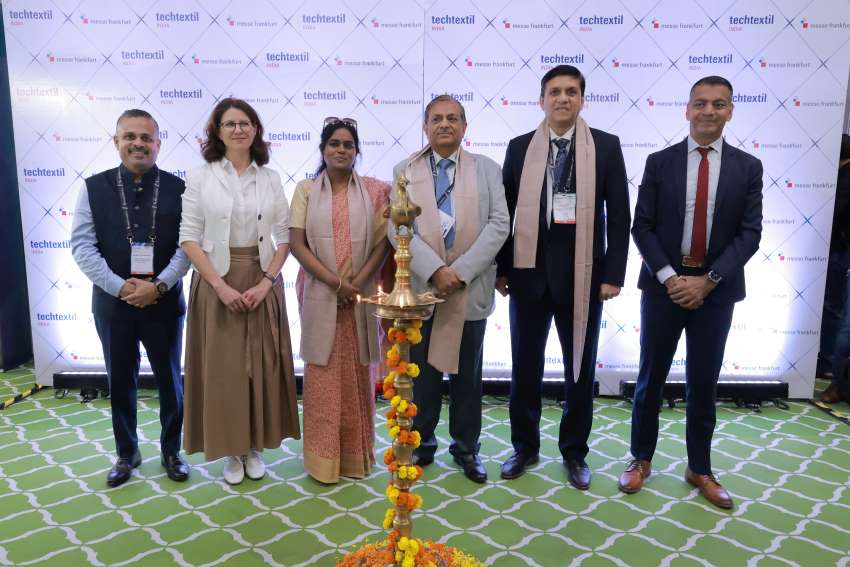FW
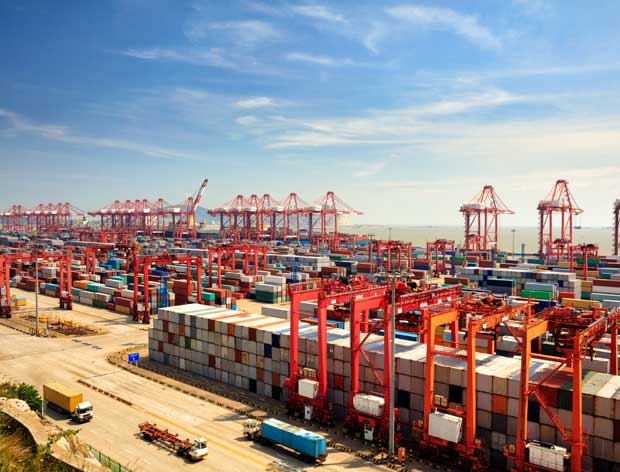
Year 2025 has seen the global textile and apparel industry facing unprecedented volatility, largely because of the unpredictable US tariff policies. While the World Trade Organization (WTO) has revised its 2025 global trade forecast upwards, this seemingly positive news masks a complex reality: a rise in US imports due to its frontloading ahead of new tariffs, and a supply chain in flux as brands and manufacturers grapple with uncertainty.
The textile and apparel sector, a major contributor to international trade is at the epicenter of this disruption. Data from the first half of the year reveals a short-term scramble for goods, but long-term shifts are proving difficult to implement, creating a ‘wait and see’ environment that is having a significant impact on exporting nations and their workers.
Is it a temporary respite for global trade?
The WTO's revised forecast, predicting a 0.9 per cent increase in global merchandise trade for 2025 (up from a previous forecast of a 0.2 per cent decline), is a direct result of US import behavior. This increase, however, is not a sign of a strong, stable market. Instead, it is an artifact of companies rushing to import goods before new and heavier tariffs take effect. The WTO warns these tariffs could negatively impact trade in the latter half of 2025 and into 2026. This is particularly concerning for the textile and apparel sector, which is highly reliant on global supply chains.
The broader economic picture remains fragile. According to KPMG, global GDP is expected to slow from 3.2 per cent in 2024 to 2.7 per cent in 2025, and then to 2.8 per cent in 2026. This fragile demand, coupled with the unpredictability of trade policy, is forcing companies to put major investment decisions on hold.
US imports, the race against time
US import data for the textile and apparel industry confirms this trend of frontloading.
First Half 2025: As per the US Office of Textiles and Apparel (OTEXA), total US textile and apparel imports rose by 5.88 per cent in the first half of 2025 compared to the same period in the previous year. This was a direct result of inventory restocking and purchasing to get ahead of the anticipated tariff hikes.
Shifting sourcing patterns: The data shows a clear shift in global sourcing patterns. While China remains a major supplier, its market share is rapidly eroding. The new tariff regime has catapulted China's average tariff rate to 69.1 per cent, far exceeding other major suppliers. This widening tariff gap is a powerful motivator for brands to diversify their sourcing.
Countries like Vietnam, Bangladesh, Cambodia, and India have seen a rise in exports to the US as brands look to mitigate the impact of tariffs on Chinese goods. For example, Bangladesh reported a 25.13 per cent increase in apparel export volume to the US in the first half of 2025. Conversely, countries like Pakistan and Canada have seen a decline in their textile and apparel exports to the US.
The following data table illustrates the shifting landscape of US textile and apparel imports.
Table: US apparel import volume (H1 2025)
|
Country of origin |
H1 2025 import volume (in SME) |
Year-on-year change (%) |
|
China |
10,110.969 million SME |
-24% |
|
Vietnam |
3,121.245 million SME |
+16.4% |
|
Bangladesh |
2,875.568 million SME |
+25.13% |
|
India |
1,211.102 million SME |
+18.9% |
|
Indonesia |
987.334 million SME |
+14.2% |
|
Cambodia |
845.541 million SME |
+11.8% |
Data source: (OTEXA) and other industry sources. SME or Square Meter Equivalent
Impact on supply chain
The tariff-led instability has created a ripple effect throughout the global textile and apparel supply chain. Faced with higher costs from tariffs and supply chain disruptions, brands and retailers are absorbing a major portion of these costs rather than passing them on entirely to price-sensitive consumers. This is impacting profit margins. Meanwhile, to reduce the financial burden, US importers are negotiating with their suppliers to share the tariff costs. This has led to a decline in the unit price of apparel imports from major exporting nations. For instance, the unit price of apparel imports from mainland China fell by 4.1 per cent between February and May 2025 as a result of these negotiations.
While the immediate instinct is to find new suppliers, the transition is not simple. "Upending a company's supplier base can be a multi-year, if not a multi-decadal, undertaking," says Jackson Wood of Descartes. This has led to a China+1 or China+N strategy, where companies maintain their relationships with Chinese suppliers but gradually shift a portion of their production to other countries. The goal is to build redundancy and resilience rather than execute a complete exit.
Interestingly despite the tariff pressure, China is not a passive participant. The country's textile industry is leveraging its core strengths to remain competitive. China's well-developed and integrated textile ecosystem, from fiber production to final packaging, offers an unmatched advantage in terms of efficiency, speed, and cost savings. A large order that might take 50 days to complete elsewhere can be finished in 25 days in China.
Moreover, Chinese textile manufacturers are increasingly adopting advanced technologies like AI-driven systems, automation, and blockchain for end-to-end traceability. This improves production speed, quality control, and helps meet sustainability and compliance standards that are becoming increasingly important to global buyers. Also, Chinese exporters are actively diversifying their own markets, shifting their focus to non-US markets, including Southeast Asia and the European Union, to offset the decline in US-bound shipments.
Thus the textile and apparel industry in 2025 is a study in contradiction. While global trade numbers appear to be on the rise, this is a fragile and short-term phenomenon driven by a tactical response to unpredictable US trade policies. The underlying trend is one of substantial disruption, with established supply chains being tested and new ones slowly emerging. The full impact of these tariffs on global trade, and the long-term tactical decisions of companies, is yet to be seen. However, as the data from the first half of the year suggests, the current environment is putting immense pressure on manufacturers and their workforces, forcing a recalibration of global production and a painful reassessment of traditional trade relationships.
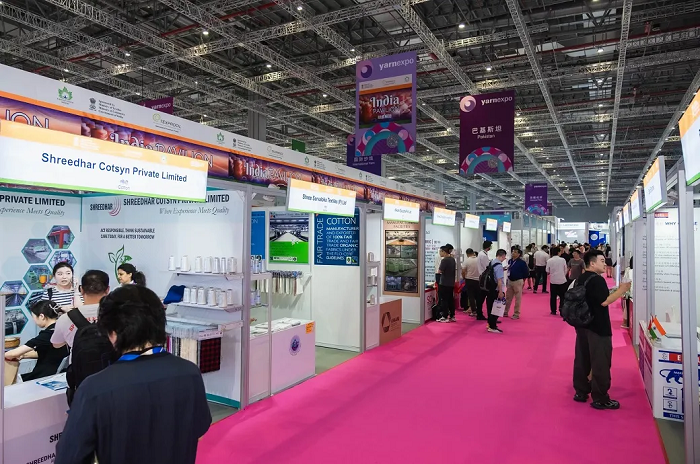
Asia’s premier platform for the yarn and fiber industry, Yarn Expo Autumn will commence on September 2, 2025, at the National Exhibition and Convention Center in Shanghai. With nearly 580 exhibitors from 16 countries and regions, this year’s event is being hailed as the ‘most comprehensive edition yet,’ featuring seven dedicated zones and a robust fringe program.
The three-day fair will serve as a vital hub for global industry exchange, innovation, and sustainability. Spanning 27,000 sq m in Hall 8.2, the event will provide buyers with a wide array of sourcing options. The show will introduce a new Taiwan Zone and see the return of the popular India Pavilion and Pakistan Zone.
Yarn Expo Autumn 2025 is the most comprehensive edition yet, says Wilmet Shea, General Manager, Messe Frankfurt (HK). Time and again, this fair proves to be one of the most vital sourcing hubs for thousands of diverse buyers, while the platform is essential for suppliers looking to get international business and penetrate the Asian and Chinese markets. Shanghai is an industry hub in its own right, but during this show it really serves as the global industry’s gathering point.
Featured product zones
The expo's six product zones will highlight key segments of the domestic industry:
• Chemical Fiber Zone: Over 240 exhibitors will display the latest trends in high-quality Chinese synthetic fibers. Key producers include Fujian Eversun Jinjiang Co Ltd, Huafon Chemical Co, and Shandong Nanshan Fashion Sci-Tech Co.
• Fancy Yarn Zone: More than 120 exhibitors will showcase their latest, on-trend fancy yarns for the autumn season. Participants include Fortune Tech Co Ltd and Jiangyin Tianhe Printing and Dyeing Co.
• Linen Yarn, Silk Yarn, and Wool Yarn Zones: Nearly 30 suppliers will present the latest innovations in natural fibers. Featured exhibitors include Dashiqiao Silk Spinning Factory and Hubei Jinghua Textile Group Co.
• Cotton Yarn Zone: With a focus on sustainability, technology, and fashion, this zone will host over 70 quality cotton spinning exhibitors. Highlights include Suzhou City Yishuang New Material Co Ltd and Wuhu Fuchun Dye and Weave Co Ltd.
International presence and key pavilions
Yarn Expo will serve as a key sourcing hub for high-quality products from around the world. The International Yarn Zone will feature suppliers from 16 countries and regions, including standalone exhibitors like Haksa Iplik Sanayi AS (Türkiye), Rutex GmbH (Germany), and The Movement Amsterdam B.V. (Netherlands).
The fair will also feature several country-specific zones:
• India Pavilion: Organized by The Cotton Textiles Export Promotion Council (TEXPROCIL), this pavilion will showcase a wide range of cotton yarn from nearly 20 notable suppliers.
• Pakistan Zone: Well-known exhibitors like Abtex International (Pvt) Ltd and Xiamen Naseem Trade Co will showcase various blended yarns and cotton single and double yarn, including organic cotton.
• Taiwan Zone: Organized by the Taiwan Spinners' Association, this debuting zone will feature suppliers showcasing a diverse array of open-end yarns, including cotton, CVC, and TC.
Informative fringe events
In addition to the extensive exhibition, a series of seminars and display areas will provide insights into new industry developments:
• Tongkun • China Fiber Fashion Trends Display Zone: This area will feature over 300 samples of new fiber products, highlighting the latest fashion trends.
• New Fiber New World – Textile Materials Innovation Forum: University professors and industry experts will discuss the development of intelligent textiles and new fiber trends.
• Product launches: The event will hold 11 new products launches, with leading exhibitors explaining the benefits of their latest yarns and fibers.
Yarn Expo Autumn will be held concurrently with three other major fairs - Intertextile Shanghai Apparel Fabrics, CHIC, and PH Value—to create a synergistic event covering the entire textile and fashion supply chain. The show also coincides with Cinte Techtextil China, a dedicated event for technical textiles.
A well-known men’s fashion brand, RomperJack has officially launched its new premium men’s underwear line called Romps. The collection introduces two main styles, Boxer Brief Romps and Trunk Romps, both designed with a focus on comfort, breathability, and durability using a cool cotton fabric.
This new underwear line is a natural expansion for RomperJack, a brand that has built its reputation on challenging traditional men's fashion with stylish rompers and jumpsuits. The launch of Romp aims to offer men a product that is both practical and stylish, designed for the demands of daily wear.
The Romps collection is built with a strong attention to detail and high-quality materials. Customers can choose from two ranges: Trunk Romps, a modern, shorter cut in Indigo, Sky, and Onyx and Boxer Brief Romps, a longer style with extra coverage in Indigo, Heather Gray, and Onyx. Both styles are sold in convenient three-packs. RomperJack is also backing the new line with an easy return and exchange policy to ensure customer confidence.
According to Emmanuel Sullivan, CEO, RomperJack, the brand aims to create bold fashion pieces that inspire confidence. He explains, they have applied the same philosophy to these everyday essentials. It’s a product built to make men feel comfortable, stylish, and empowered from the moment they get dressed in the morning, Sullivan adds.
The Romps collection is available exclusively on RomperJack's official website. The brand gained national recognition after being featured on the television show Shark Tank.
Stefan Larsson, CEO and Zac Coughlin, CFO, PVH Corp will attend in the Goldman Sachs 32nd Annual Global Retailing Conference.
One of the world’s largest fashion companies, PVH Corp owns brands like Calvin Klein and Tommy Hilfiger. The company operates in over 40 countries across the globel
Hosted by Goldman Sachs, the 32nd Annual Global Retailing Conference is a platform where executives from major companies in the retail sector present and discuss their business strategies, financial performance, and future outlook with investors and analysts.
The event will be broadcast live online, and a link to the webcast will be available on the Investors section of the company's website, pvh.com.
The National Council of Textile Organizations (NCTO) has voiced strong support for the end of the de minimis rule for low-value commercial shipments, a move they say will provide long-overdue relief to the US textile industry and its workers.
Kim Glas, President and CEO, NCTO praised the Trump administration’s action, which will close a trade measure that she says has been exploited for years by Chinese e-commerce giants and other foreign shippers. Previously, the loophole allowed companies to bypass tariffs and customs reporting on shipments valued at $800 or less.
According to Glas, this practice has devastated US manufacturers, undercut American jobs, and allowed the entry of unsafe, counterfeit, and forced-labor-produced goods. As of August 29, all commercial shipments must adhere to the same rules, including customs documentation and the payment of all applicable duties and fees.
Glas dismissed concerns that the change would disrupt package deliveries. She stated, consumers will still receive their online orders, but now they will arrive through a system that is fair, transparent, and enforceable. Glas asserted, US Customs and Border Protection (CBP) and the US Postal Service are fully equipped to handle the change, with the necessary systems already in place.
This action expands upon a previous suspension of de minimis treatment for low-value commercial shipments from China and Hong Kong that has been in effect since May 2. That initial change already covered the majority of de minimis packages. The new measure ensures that all small package shipments, regardless of their delivery method, are subject to proper inspection, information, and duty collection.
A Washington, DC-based trade association, NCTO represents the entire US textile supply chain. Glas concluded her statement by calling the action a historic win for U.S. industry, American workers, and the integrity of our trade system.
In 2024, the US textile supply chain employed 471,046 people, and the value of its shipments was $63.9 billion.
Leading US specialty apparel company, Gap Inc exceeded profit expectations and met sales goals in Q2, FY25.
As per Richard Dickson, President and CEO, the owner of well-known brands like Old Navy, Gap, Banana Republic, and Athleta, Gap Inc reported net sales of $3.7 billion during the quarter, which remained flat compared to the previous year. However, the company’s comparable sales increased by 1 per cent Y-o-Y. Their online sales grew by 3 per cent and accounted for 34 per cent of total net sales, while store sales declined by 1 per cent. Gap Inc currently operates approximately 3,500 stores in over 35 countries, with 2,486 of them being company-owned.
The company’s net income increased to $216 million during the quarter despite gross margin declining by 140 basis points to 41.2 per cent.
Bangladeshi garment exporters are urging authorities to quickly resolve the cash shortage in five to six commercial banks, warning, a failure to do so could lead to significant business disruptions. Bangladesh Garment Manufacturers and Exporters Association (BGMEA) had recently stated that delays in salary payments and difficulties opening letters of credit (LCs) are creating major problems for its members.
Mahmud Hasan Khan, President, BGMEA, said, exporters who use the affected banks are finding it hard to pay their workers on time and to secure the LCs needed to import raw materials. The banks are also reportedly unable to promptly release export proceeds, which is further complicating operations for apparel manufacturers. If banks fail to disburse salaries on time, labor unrest may rise in garment factories, Khan added after a meeting with Ahsan H Mansur, Governor, Bangladesh Bank.
Md Shehab Udduza Chowdhury, Vice-President, BGMEA noted, approximately 350 export-oriented garment factories are being affected by the dollar shortage at these banks. He explained, while importers’ needs are being prioritized, exporters who are earning the dollars are unable to access them. This is preventing them from settling back-to-back LCs and purchasing raw materials for production.
The current demand for dollars has increased following the US's finalization of a 20 per cent tariff settlement. This has prompted international retailers and brands to place more orders for upcoming seasons, increasing the need for dollars to import materials for shipments to the US, Europe, and other markets.
Mansur has assured BGMEA leaders, measures will be taken promptly to ease the liquidity constraints. Chowdhury said they expect the problem could be resolved by the end of the month. Exporters emphasized that any prolonged dollar shortage during this peak season could severely impact the sector's operations and international reputation.
In 2024, fashion emerged as a major winner in the global licensing industry, with a growth rate of 8.1 per cent, according to the recent Licensing International 2025 Global Licensing Industry Study. This growth significantly outpaced the overall global licensing industry, which saw a 3.7 per cent increase.
The report notes, a shortage of new intellectual property in the entertainment sector contributed to a rise in royalties from non-entertainment properties. This helped fashion licensing increase its market share to 9.3 per cent of licensed retail sales, a 0.4 percentage point jump. This expansion was also fueled by other product categories that frequently license fashion brands, such as home décor, beauty products, sportswear, and footwear.
The study also highlights how cost-conscious consumers are changing the retail landscape. As prices have risen, shoppers have increasingly turned to discount retailers. For example, the report points out, while Nordstrom's sales declined by 3 per cent in 2024, its off-price outlet, Nordstrom Rack, saw sales increase by nearly 15 per cent.
Price-sensitive consumers are also showing more interest in private-label products, as well as trade-in, buyback, and upcycling programs. Citing an eBay report, the study states, more than 70 per cent of global consumers planned to buy used goods in 2024. The stigma once associated with buying used clothing has been replaced by a focus on ‘deal-hunting, value, and sustainability; among younger consumers, particularly Gen Z and millennials.
Simultaneously, a growing interest in sustainability has also boosted the trend of ‘quiet luxury,’ which the report defines as an investment in minimalist, high-quality fashion.
American Eagle Outfitters has launched a new, limited-edition collection with Travis Kelce’s brand, Tru Kolors. The ‘AE x Tru Kolors’ collection was launched just a day after the Kansas City Chiefs tight end was reported to be engaged to artist Taylor Swift.
More than a year in the making, this new collection is a fusion of fashion, sports, and culture, bringing together the denim brand with one of football's most recognizable faces. Kelce, Creative Director, Tru Kolors, was deeply involved in every part of the collection’s development. Guided by his ‘live to play’ philosophy, he worked on everything from design and fabric choices to colors, fits, and graphics. The resulting collection reflects both his and American Eagle's commitment to creating versatile, confident pieces.
Jennifer Foyle, President and Executive Creative Director, American Eagle Outfitters, avers, American Eagle and Travis Kelce were destined to collaborate. An iconic brand is teaming up with one of the greatest athletes of our generation, she adds.
With prices ranging from $14.95 to $179.95, the 90-piece collection will be released in two drops, with the second scheduled for September 24. It features a range of elevated everyday essentials and reimagined classic silhouettes, including vintage-inspired tees, updated varsity jackets, and utility cargos.
The new launch follows a period of controversy for American Eagle. The brand recently faced public criticism for its ‘Sydney Sweeney has great jeans’ campaign, which some critics viewed as having problematic ties to eugenics and racial superiority due to its wording and imagery. American Eagle has defended the campaign, stating that it was always intended to celebrate how ‘everyone wears their AE jeans with confidence.’
Abercrombie & Fitch Co has entered into a new multi-year partnership with the Dallas Cowboys, naming the brand as an Official Fashion Partner for both the team and the Dallas Cowboys Cheerleaders. This marks the first partnership of its kind between Abercrombie and National Football League (NFL) team, following the NFL's recent designation of Abercrombie as an Official Fashion Partner for the league.
This new collaboration builds on the success of Abercrombie's current NFL product line, which already includes Dallas Cowboys gear for men, women, children, and pets. As part of the partnership, Abercrombie will sell its licensed Cowboys collection at select Cowboys pro shops and have a significant presence at AT&T Stadium and The Star. The brand will also be featured at key team events, including home games, the Cowboys Club, and Dallas Cowboys Women’s Association events.
Carey Collins Krug, Chief Marketing Officer, Abercrombie & Fitch Co says, the company’s partnership with the Dallas Cowboys allows it to connect fashion and football in a way that extends well beyond game day. They are bringing their approach to style into the Cowboys’ world, from the players to the larger fan community.
In a unique twist, Abercrombie has also teamed up with Cowboys wide receiver CeeDee Lamb and tight end Jake Ferguson as early participants in the brand's ‘Style Concierge’ program. This program gives select NFL players access to Abercrombie stylists for their off-the-field looks. Fans will get a chance to buy player-designed apparel when CeeDee Lamb's collection debuts later this season in select Abercrombie stores and on their website.
According to Charlotte Jones, Chief Brand Officer, Dallas Cowboys, the NFL and fashion are more aligned than ever, which makes this partnership with Abercrombie an impactful step forward. Together, they are taking the intersection of the Cowboys brand, lifestyle, and apparel even further.



